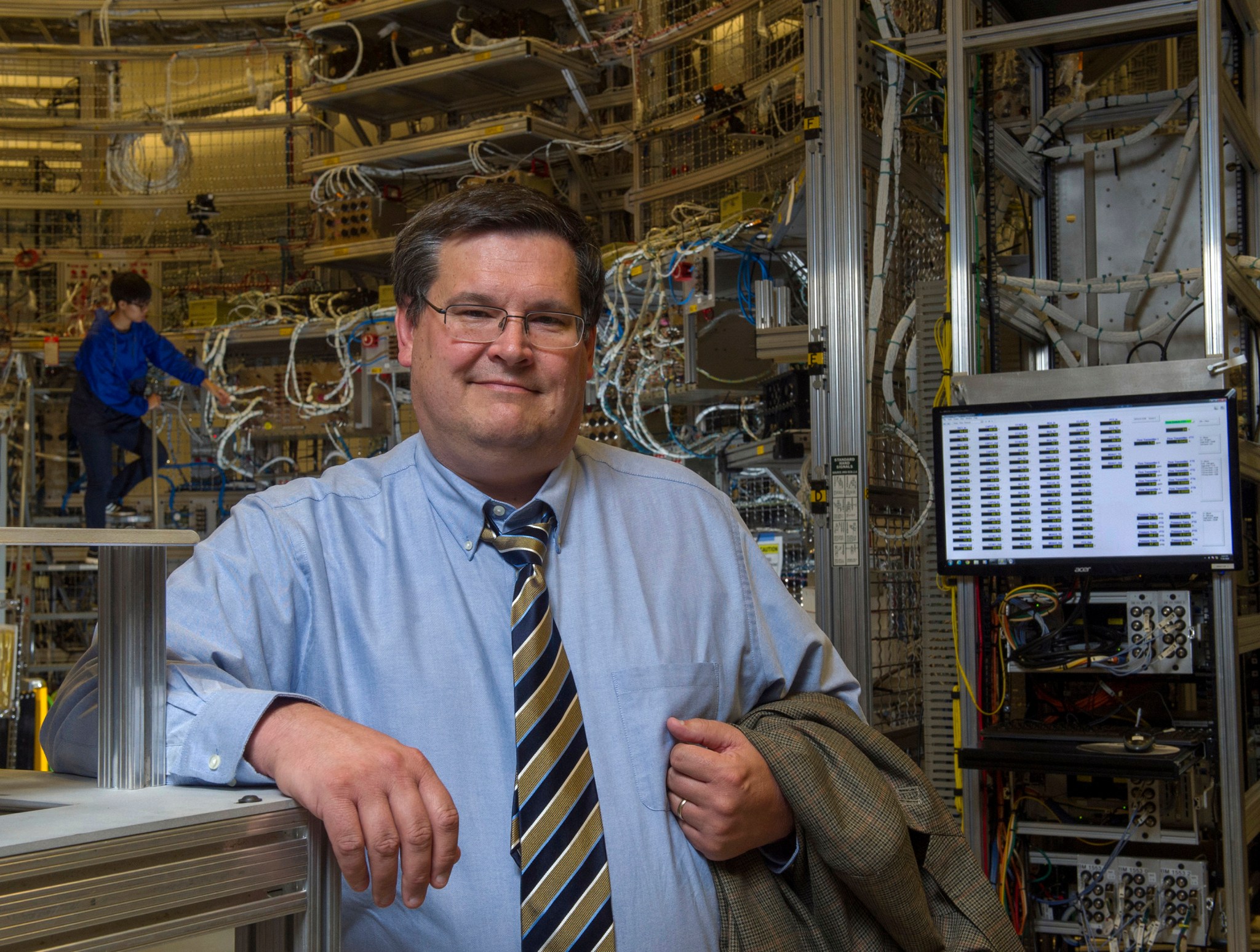Asked to identify the engineering task that epitomizes his quarter-century of service to the nation’s space program, NASA’s Larry Leopard looks past some of the agency’s highest-profile activities and singles out a simple rocket engine project dubbed Fastrac.
“That effort made a big impact on me,” recalled Leopard, who served on the in-house Fastrac team from 1996-1999, and who this June was named deputy director of the Engineering Directorate at NASA’s Marshall Space Flight Center in Huntsville, Alabama. “The work was fast-paced, highly complex and executed on a very short schedule. We had to quickly and efficiently pull multiple engineering disciplines together, going from a clean-sheet-paper engine design to hot-fire testing in a test stand in just three years.”

Two decades later, that innovative, award-winning development effort — uncomplicated and cost-efficient — continues to inform how NASA engineers execute next-generation engine design projects at Marshall. And Leopard continues to apply the critical lessons he learned on the project.
“Team dynamics, fresh ideas and new challenges,” he said. “I place a lot of importance on people. Pull the right team together and you can do almost anything. When they’re working in harmony, that’s where real power comes from.”
As deputy director of the Engineering Directorate, Leopard helps its director, Preston Jones, oversee Marshall’s largest organization, including more than 1,200 civil service and 1,100 contractor personnel who design, test, evaluate and operate hardware and software associated with space transportation, spacecraft systems, science instruments and payloads now in development at Marshall. The directorate underpins the center’s entire gamut of work — from NASA’s Space Launch System, America’s new heavy-lift rocket, to the International Space Station Payload Operations Integration Center, the NASA command post based at Marshall for oversight of round-the-clock science research aboard the orbiting laboratory.
Fresh ideas, he said, are vital to all those endeavors. “The world keeps moving forward, and people constantly find new ideas for doing our work faster, smarter and more cost-effectively,” he noted. “The concept of retooling, of engineering for the future, must drive us. Otherwise our standards and processes become codified by our experiences, and we stop questioning our habits, stop looking for places to improve. We never want to throw out what makes Marshall engineering great, but we must use what we and others have learned over the last 10 years so we can update the standards enacted in the 10 years before that.”
Finally, he said, new challenges should always appeal to the dedicated individual and the team alike. “This is what engineers love,” he said. “We want the hardest problems to solve! We want to do great, cutting-edge technical work, optimized for the scheduling and budget constraints at hand.”
Leopard is used to juggling such factors. He was director of the Engineering Directorate’s Space Systems Department from 2014 to 2016 and its deputy director from 2011 to 2014. From 2008 to 2011, he was deputy manager of its Propulsion Systems Department.
He was appointed in 2008 to the Senior Executive Service, the personnel system covering most top managerial, supervisory and policy positions in the federal executive branch. Prior to starting SES training in 2006, he completed assignments at NASA Headquarters in Washington, in Marshall’s Space Shuttle Propulsion Office, and at United Launch Alliance’s Delta II and IV Manufacturing and Assembly Plant in Decatur, Alabama.
A 1987 graduate of the University of Alabama in Huntsville with a degree in mechanical engineering, Leopard started his aerospace career as a propulsion engineer at Martin Marietta in Huntsville, supporting Marshall’s Propulsion Systems Laboratory from 1988 to 1990.
A native of Athens, Alabama, Leopard joined NASA in 1990. He continues to strive to pay forward all he’s learned in his years at Marshall by mentoring team members and student interns alike, helping them pave the way for a bright future in engineering.
“The retirement of federal workers is one of the main challenges we face as an engineering organization,” he said. “We have to pass the torch, transitioning the knowledge of folks who’ve spent entire careers here to our new hires so they in turn can become new catalysts for progress, carrying NASA forward into the 21st century and beyond.”
Enabling that transition, Leopard said, is a key part of his role as deputy director.
It’s a role in which he already seems poised on the “fast track” to success.
Learn more about engineering and its key role in Marshall work here:
























